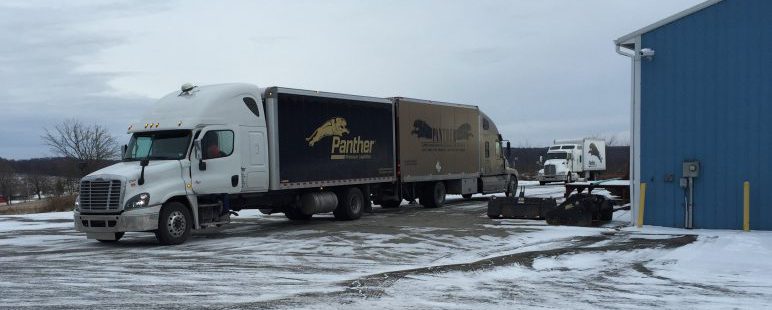You just took a load from Michigan to New Jersey, and now you’ve got an empty move to pick up a priority load in South Carolina. Michigan was bitterly cold. You barely made it out of Jersey before an ice storm hit. The forecast for the Carolinas is balmy, breezy, and blue skies. You fuel up in Ashland, VA, and get back on the road, ready to see some sunshine and Carolina blue skies. Then you’re cruising down I-95, closing in on Richmond, when it happens. Your truck shuts down with no warning. It’s all you can do to pull over.
Has a scenario like this ever happened to you? Did you get an expensive tow, only to learn that you needed new fuel filters?
You’ve been a victim of sludge. It preys on unsuspecting trucks throughout the winter, kicking up as you move from cold to warm climates. It’s a big and potentially very expensive problem that the oil companies won’t acknowledge. If you don’t take steps to prevent sludge build-up, you may very well find yourself stuck.
What is sludge?
Our government mandates that a certain percentage of diesel fuel be composed of biodiesel. The percentages and mandates vary by fuel type and state (you can look up regulations for specific states at that link), and there are also tax incentives to the states for using these blended fuels. Biodiesel is a renewable, biodegradable fuel made from (per EPA definition) vegetable oils, animal fats, or recycled restaurant grease. Another common source of biodiesel: corn.
I’m not going to get into all the issues around using corn to make fuel and whether it’s really any more environmentally friendly than pure diesel. Here is what a trucker needs to know about biodiesel: it’s not an oil-based product, but rather it’s an alcohol product (e.g. ethanol). We all know oil and water don’t mix, but water and alcohol mix very nicely. In general, there shouldn’t be any water in your fuel, but often it’s inadvertently added during the production process. This shouldn’t really create a problem, and it’s why trucks have fuel water separators. However, another thing that occasionally happens during the production process is that bacteria is introduced into the fuel, which leads to contaminated fuel that we’ll call a bad batch.
When you have a bad batch of fuel plus the ethanol, the bacteria is able to grow and form an algae-like substance in the fuel tank. Yes, diesel fuel (ULSD) is a poisonous substance, and yet the algae is still able to grow. The diesel oil molecules attach to the algae, and suddenly you have sludge in your tank.
Why does the weather matter?
Typically this sludge will simply lie in the bottom of the fuel tank. As over-the-road truckers, we’re constantly moving between climates. When the truck has spent a lot of time in the cold, and then moves into a warmer temperature, the sludge starts to move around the fuel tank. The fuel pump pulls it through the filter, and the fuel filter becomes clogged. With enough sludge in the filter, the pump can no longer pull fuel to the engine and—bingo—the truck shuts down.
This is a mechanical problem, so you get no warning light or indicator code telling you what’s happening. The truck’s computer doesn’t know why it’s stopped. If your truck isn’t running and you have no indicator light telling you why, this is almost always a fuel problem.
Go to the next post, where we’ll talk about what to do if you’ve been a victim of sludge and how to prevent this beast from taking up residence in your truck’s fuel tank.

